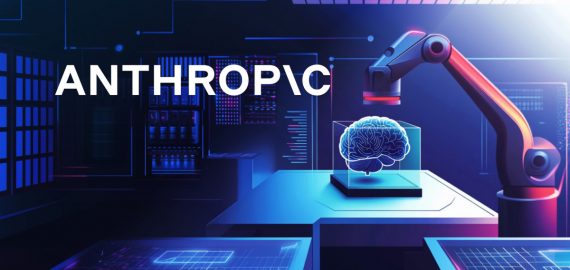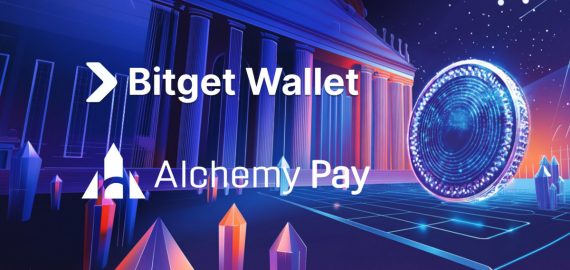Advancing Web3 With Starknet: Gnana Lakshmi on the Growth, Challenges, and Future of Blockchain Development


In Brief
Gyan, a Developer Advocate at the Starknet Foundation, discusses the evolution of the Web3 industry in India, StarkEx and Starknet roles, STARK token advantages, and the future of gaming.
We recently had the pleasure of interviewing Gnana Lakshmi, affectionately known as Gyan, a Developer Advocate at the Starknet Foundation, ahead of the upcoming Hack Seasons Brussels. In our conversation, we delve into her insights on the evolution of the Web3 industry in India, the distinct roles of StarkEx and Starknet, the advantages of the STARK token, and the future of gaming on Starknet. Gyan’s dedication to education and emerging technologies shines through as she discusses her contributions to the Starknet Foundation’s vision and her excitement for Hack Seasons Brussels.
Many entrepreneurs are drawn to their field by a specific moment or event. What sparked your interest in this industry, and how has your passion evolved over time?
My name is Gnana Lakshmi, but everyone calls me Gyan for simplicity. I am based in Bangalore, India, and I work as a developer advocate with the Starknet Foundation. I’ve been part of the Web3 ecosystem for the past few years, starting my journey around 2017-2018.
I began as a freelance security developer and gradually explored various roles at the intersection of blockchain, education, and technology. My primary interests lie in education and emerging technologies, which is why I gravitate towards roles in this space. Blockchain, being a constantly evolving field, offers endless opportunities for learning, teaching, and exploration, which is what I find most exciting about Web3.
I have worked with various protocols and companies, creating educational materials and helping onboard numerous developers over the past few years. This work aligns perfectly with my passion for education and emerging technologies.
Currently, as a developer advocate at Starknet, I continue to pursue my passion by building educational resources, conducting workshops, and engaging with the developer community. I consider myself fortunate to be able to combine my interests in education, technology, and blockchain in my current role.
What was your first project, and what inspired you to join this field?
From that first project, my journey in Web3 has been diverse and enriching. My first project in Solidity was a small hackathon project focused on putting land and real estate records on the blockchain. Transparency in the real estate industry is a significant issue in many countries, including India, and I wanted to address this problem.
This project was my initial foray into blockchain development, and it won a prize at the hackathon. At the time, not many people were familiar with Solidity or blockchain technology, which made the experience even more fascinating. The idea of using technology to decentralize infrastructure and bring transparency to an ecosystem was both new and exciting to me.
How do you see the development of the Web3 industry in India right now?
The Web3 industry in India is currently experiencing significant growth and interest. There’s a substantial number of developers and users who are exploring various use cases and applications of Web3 technology. India, like many developing countries, is a prime candidate for implementing transparency and value extraction mechanisms that Web3 can offer.
India has produced several notable Web3 developers and even a few Web3 unicorns. Interest and progress in the field are evident. However, junior developers still need to be educated on how to build practical and impactful use cases in Web3 beyond learning programming languages. This educational push is essential for the continued growth and development of the Web3 ecosystem in India.
Why did StarkWare develop both StarkEx and Starknet and what distinct purposes do they serve?
StarkEx was developed well before Starknet and serves a different purpose. StarkEx is a private offering, designed as an app-specific roll-up that provides services in a more controlled manner. It is used by various companies, such as Immutable X and SORA, which continue to benefit from its roll-up services.
Seeing the success of StarkEx and the robust performance of STARK protocols, the idea emerged to create a more permissionless, decentralized, and public-facing Layer 2 (L2) solution. This led to the development of Starknet. While StarkEx uses STARK to create proofs and bundle them up for settlement on different layers, Starknet extends this functionality to a broader audience.
Starknet is designed to be a permissionless and decentralized L2 solution that scales Ethereum and is accessible to everyone. Its public nature allows developers and users to build and leverage the network together, contributing to its scalability and overall growth. This makes Starknet distinct from StarkEx, with the latter being a private service and the former a public, decentralized platform aimed at scaling Ethereum for widespread use.
Can you explain the reasons for using the STARK token as the fee token for Starknet rather than Ether? What are the advantages and disadvantages of this approach?
Before the launch of the Stark token, we used Ether (ETH) to pay transaction fees on Starknet. However, there was a compelling reason to introduce the Stark token: to make Starknet’s development more public and to reward those contributing to its infrastructure. Starknet is open source, so it’s crucial to incentivize and reward people who build and continue to build open-source technology.
You can think of the Stark token as a means of establishing sovereignty for the roll-up. It underscores that Starknet is permissionless and decentralized. Having a native token encourages and rewards people for building on the network. Currently, we use both Stark tokens and ETH for gas fees because ETH was already in use. Users can continue to pay gas fees with ETH, but they now also have the option to use Stark tokens.
What are the advantages of this duality?
From an advantage perspective, having both tokens is beneficial. People who don’t have Stark tokens can still use Starknet by bridging ETH and starting immediately. The Stark token encourages interaction with various dApps on Starknet, increasing its circulation and making it easier for users to pay gas fees with the tokens they already have.
In the future, based on community governance and decisions, we might choose to use only Stark tokens for gas fees or continue with both. Right now, bridging ETH from the mainnet to an L2 is straightforward, which supports a good user experience and decentralized on-chain mechanisms. However, the Stark token paves the way for different sequences in the plan to leverage fees in a token native to the chain. This is why we currently support both tokens for gas fees.
What were the reasons for creating two different standards (zk-STARK in addition to zk-SNARK), and why did the company ultimately choose zk-STARK?
STARK, the protocol, was developed by Ali Ben-Sassoun, a professor who deeply researched the space of STARKs. Many others contributed to its development. I’ve also previously worked on SNARKs.
I’ve been working on STARKs for the past couple of months, even years. Zk-STARK is gaining traction not only with us but also with other companies. For example, zkSync announced a project called Boojum, based on zk-STARKs. Additionally, Miden, recently acquired by Polygon, is extensively working on zk-STARKs. Zk-STARKs offer advantages over zk-SNARKs, especially in scalability.
Zk-STARKs are quantum-resistant due to their reliance on collusion-resistant hashes. Work is ongoing to improve proof size and proving time for STARKs. They’re efficient for proving larger payloads. They are also well-suited for applications like full-fledged ZK rollups.
Unlike SNARKs, STARKs are decentralized from the beginning, eliminating the need for a trusted setup. This simplifies the programming and user experience, making it easier to build scalable applications.
The development of zk-STARKs took time due to extensive research, but they are superior to zk-STANKs. Many companies, including Starkware, want to leverage them for their projects.
Starknet requires developers to use the Cairo language instead of being EVM-compatible. What advantages does Cairo offer despite the lack of EVM compatibility?
When you think about zero-knowledge-proof-based rollups or validity rollups, the main idea behind why these rollups are so powerful and how they provide scaling lies in the use of zero-knowledge proofs. These proofs leverage the mathematics of zero-knowledge to verify that a particular set of transactions is correct and valid.
To use these rollups effectively, you need an optimized virtual machine (VM) to produce these proofs. The VM we use is called Cairo VM, which stands for CPU-CPU Algebraic Intermediate Representation -0. That’s how you get the name Cairo. This VM is specifically designed to be performant in proof generation.
When comparing Cairo VM to EVM, the Cairo VM is actually more performant when it comes to proof generation. The EVM is efficient in executing its supported instructions, but it’s not optimized for creating proofs. That’s why you see ZK-EVMs trying to put EVM instructions into a zero-knowledge circuit. However, you don’t need to do that with Cairo VM because it’s already built to be super performant in producing proofs. This inherent design makes Cairo VM faster and automatically more scalable.
Cairo is a very interesting language, heavily inspired by Rust. If you’re a programmer with experience in system programming languages, learning Cairo won’t be difficult. It’s very similar to other system programming languages and highly performant, especially when used in a virtual machine designed for proof generation.
Users have reported high gas fees for transactions on ZK Rollups. What causes this, and how is Starknet addressing it?
Fun fact: Starknet is currently the cheapest Layer 2 (L2) solution for Ethereum. We achieve this through several measures.
Firstly, we are constantly making performance improvements at the network level. We are introducing new technologies such as Validium, dynamic layouts, and other upgrades. The fact that it is a roll-up built on STARK significantly lowers gas fees.
For example, I recently did some transactions on an app called Nostra Finance, a DeFi app. Being based in India, I usually see transaction fees in rupees. On Ethereum, fees often range from 500 to 1000 rupees, which is quite high. However, with Starknet, the gas fee can sometimes be as low as one rupee, which is less than a cent. This drastic reduction in gas fees is due to the highly efficient technology Starknet employs.
Additionally, with the introduction of EIP-4844, the concept of blobs has been introduced. Instead of sending information to Ethereum as call data, it can now be sent as blobs, further reducing gas fees. This is why Starknet’s gas fees are so low, making it the cheapest L2 solution available. We continue to work on various improvements because gas fees are influenced by multiple factors, including the sequencer, the prover, and the verifier on Ethereum.
At the protocol level, we are implementing solutions like batch transactions, which naturally enhance performance and reduce gas fees. Our goal is to bring gas fees as close to zero as possible, addressing the current concerns about Ethereum’s scalability.
Gaming has been highlighted as a promising use case for Starknet. Can you elaborate on why gaming is well-suited for a system like Starknet?
Gaming is one of the biggest narratives on Starknet. Everyone on Starknet loves games, and it’s a very well-suited chain for gaming because it’s fast and scalable. It also has certain features that are naturally inbuilt. For example, account abstraction is built into the Starknet protocol. There are no EOA wallets on Starknet, and all wallets are account abstracted. This enables many different functionalities, such as social recovery and session keys.
You might have seen a viral video on Twitter where people have to sign a transaction every time they take an action in a game. That’s not feasible for fully on-chain gaming. However, a protocol like Starknet is well-suited for gaming because of these built-in features. That’s why gaming is a significant focus, and it’s easier for developers to build games using our protocol. It’s faster, cheaper, and offers features that are inherently useful.
Can you please tell us more about the Starknet Foundation?
Yes, I work at the Starknet Foundation, which was established quite recently. The goal of the foundation is to support projects and builders on Starknet and to maintain its decentralization. We view Starknet as a public good, so our aim is to make it accessible to as many people as possible.
The foundation is a nonprofit organization dedicated to ensuring that Starknet is available for everyone to use to build applications that solve real-life problems. While many Web3 applications primarily cater to those already in the ecosystem, we aim to extend the reach of this technology to a broader audience, ensuring it can benefit all members of society.
There are several initiatives within the foundation to achieve this vision. For instance, we have ecosystem teams that support builders and projects emerging in the Starknet ecosystem. My team focuses on education, working with developers, creators, and project leaders to teach and guide them on building with Starknet.
How do you contribute to its vision?
My role involves managing various programs. One of these is the meetup program, which encourages people to host meetups, helping to scale Starknet globally by bringing more people into the ecosystem. I also manage the hacker house program, where hackers come together to build on Starknet, with support such as seed grants for promising projects.
Additionally, I run a program that helps individuals build their first project on Starknet with mentorship. We also have other auxiliary programs run by the ecosystem team, like the grant programs. For example, we have the propulsion grant program specifically for the gaming ecosystem and the seed grant program to support early-stage projects.
Our events team organizes various events to further our mission. All these efforts come together to support our vision, which is underpinned by Starknet’s robust technology. We continuously work to improve the user experience and expand our reach. This is my contribution to the foundation’s vision, and I’m excited about the future developments and opportunities ahead.
You’ll be a speaker at the upcoming Hack Seasons Brussels event. Could you share your plans for the event? Are you expecting any networking opportunities?
Absolutely, events like Hack Seasons Brussels provide an excellent platform to showcase the work we’re doing and engage with the community. Whether I’m participating in a panel discussion or delivering a talk, I’m eager to share insights about the exciting programs our DevRel team has in store. These events are invaluable for reaching developers and builders, and I’m particularly keen on meeting them to exchange ideas and gather feedback.
Networking with other industry professionals, both speakers and attendees, is another highlight for me. It’s a chance to learn about the latest developments in Web3 and explore potential collaborations or ways to support each other within the community.
I’m especially looking forward to connecting with the diverse lineup of speakers at Hack Seasons Brussels, as their perspectives and experiences can offer valuable insights and inspiration. Overall, I anticipate a rewarding experience filled with engaging discussions, knowledge sharing, and opportunities to strengthen connections within the Web3 community.
Disclaimer
In line with the Trust Project guidelines, please note that the information provided on this page is not intended to be and should not be interpreted as legal, tax, investment, financial, or any other form of advice. It is important to only invest what you can afford to lose and to seek independent financial advice if you have any doubts. For further information, we suggest referring to the terms and conditions as well as the help and support pages provided by the issuer or advertiser. MetaversePost is committed to accurate, unbiased reporting, but market conditions are subject to change without notice.
About The Author
Victoria is a writer on a variety of technology topics including Web3.0, AI and cryptocurrencies. Her extensive experience allows her to write insightful articles for the wider audience.
More articles

Victoria is a writer on a variety of technology topics including Web3.0, AI and cryptocurrencies. Her extensive experience allows her to write insightful articles for the wider audience.

















































